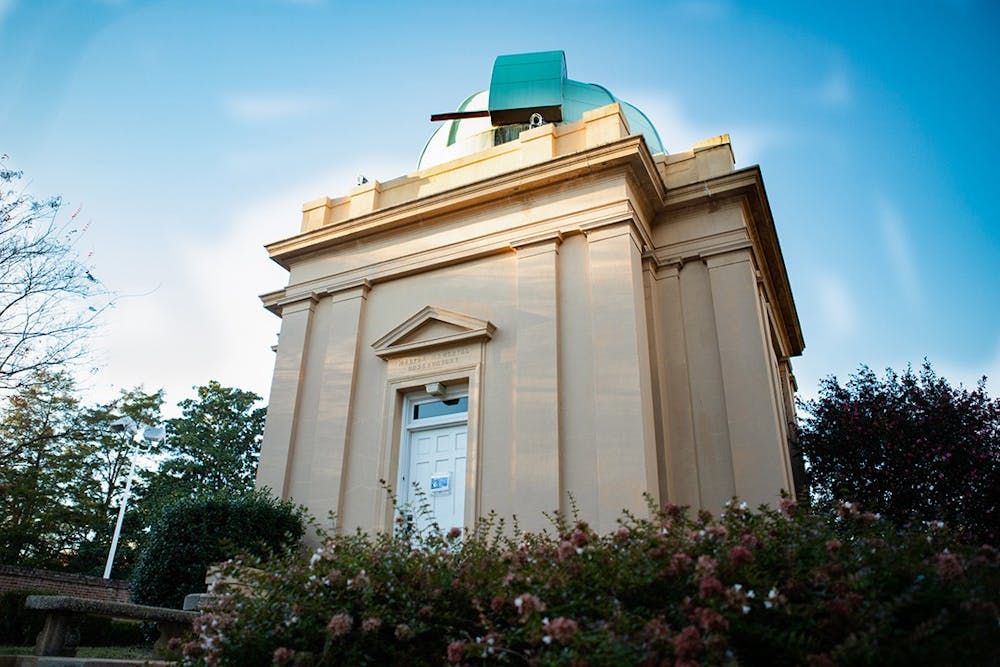People who step into the tall, green dome of the Melton Observatory near Russell House have the chance to gaze at planets and stars and learn more about the solar system and astronomy.
On clear Monday nights from 7 p.m to 9 p.m, the observatory — named after USC's president in the 1920s, William Davis Melton — opens its telescopes to the public.
Martin Bowers, director of the observatory for the past four seasons, said he received an outstanding number of volunteers this year, compared to years past.
"I was looking forward, not only to the chance to work with some bright young people and show them a few things about the night sky, but also to work with that marvelous old instrument that they have at the observatory," Bowers said.
Bowers said anyone that wants to volunteer can do so by simply sending him an email.
The student volunteers range from any and every major and all share a love for astronomy. They can work hands-on with the equipment as volunteers.
Preston Lee, who volunteers weekly, learned about the observatory's opportunities through the Department of Physics and Astronomy.
“There’s other stars and planets and galaxies that we can see. It’s a really great opportunity," Lee, a first-year physics student, said.
Although the light pollution from Columbia hinders visibility some nights, the observatory still catches views of the vast range of stars and planets.
Volunteers were able to capture the movement of Jupiter's moon through pictures which Bowers then turned into a motion picture, Lee said.
“You could say it’s a once in a lifetime opportunity to see those things, but they’re just really cool. For me, it was life-changing," Lee said.
Lee said he plans on attending graduate school for astrophysics.
Students not involved in astronomy classes, such as Ryan Battaglia, visit the observatory as well.
“I feel like it’s a good way to be able to do stuff without having to worry about buying your own equipment,” Battaglia, a first-year civil engineering student, said.
Battaglia said he picked up an interest in astronomy during summer 2020. “During the pandemic, I tended to stay up really late,” Battaglia said.
The observatory’s viewings were live-streamed during the height of the pandemic, but now it has slowly started opening back up again and letting in a certain number of people at a time.
The current capacity is four guests in the dome at a time and eight guests on the rooftops. Facemasks must be worn at all times in the facility.
Past live streams can be found on the Melton Observatory website.
“The universe is an amazing thing. It’s exciting to study it whether or not you’re taking an astronomy class, but it’s beautiful to look,” Bowers said. "Come look at the universe."

